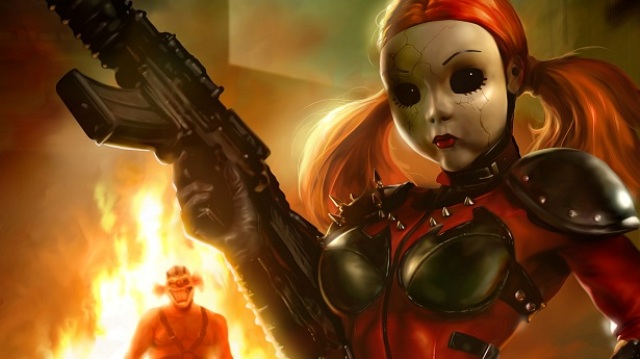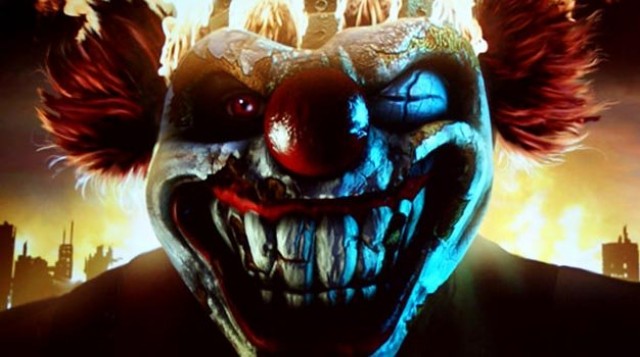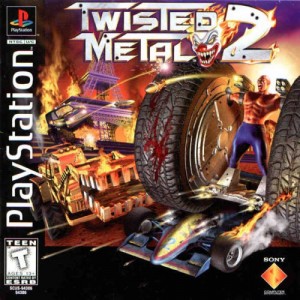GamesBeat: How often do both of you play the game throughout the development cycle?
Bradford: It kind of depends on the timing. Early stages, you’re playing it a lot, because there’s a lot… You have to do big, huge tuning moves during the game, whether it’s a level or whether it’s a car, weapon systems, whatever. You’re playing it constantly and you’re trying to make what you have better. And then you get more into the… Okay, now it’s on the testers. Now we have this stuff that we know is in there, we have to keep an eye on the major systems going in and make sure they’re going in correctly, but more on the testers to come back with the bugs and the issues, the things that we have to fix. And then you get to the end of the game and it doesn’t matter. The game is the game at that point. You’re not going to swing it one way or another. You may move the needle a little bit by changing this one thing or that one thing, but it’s all about… The last six months are all about just getting the game out the door. It is what it is at that point. You’re not going to add a bunch of cool stuff, you’ve just got to get it done.
GamesBeat: Last nine months in your case, because of the delay, right…?
Bradford: Yeah, there’s been…
Quintana: Just a little bit. Yeah.
Bradford: There’s been a lot of features added to the game, so we’ve had several release dates, and February 14 is our final. It is approved by format, we have all the thumbs up…
GamesBeat: In the last, last delay, from October to now, is that just polishing? Can you detail what that delay really means to people?
Bradford: There’s a lot of things that went into that. Some of it was on our end, saying “The game’s not ready,” and Sony not wanting to put out a bad product. Sony’s good about that, letting the developer develop, and not worrying about scope, schedule… It’s gotta be a good game, because they want to sell hardware and we want to sell video games, so it’s mutually beneficial that we put out something that’s the quality that we expect. This is a huge franchise that people expect a lot out of. If it’s not right it’s not right. It can’t be the first title to market, the first IP saying, “Well, this is what it is, it may change in the next one.” This is… People know what this franchise is, and we can’t sell them short. We have to nail it. There’s no room for error.
GamesBeat: Speaking of that, the expectations and what the franchise is, the character roster was actually cut down pretty heavily. Can you talk about the decisions behind that and what the feedback has been like?
Bradford: That was an easy one. You can go for number of characters, or you can go for depth of characters. What we decided was, we’re going to go for deeper character stories, get back into the origins of some of the most… I guess, the most iconic characters in the series. Pick them out and dig a little deeper into who these people are. What happened in the tournament. As opposed to just doing the cheapo, rip-off, it’s been done a thousand times before, where you just do cels and show kind of a comic-book style with some text on screen or V/O or whatever it is…
GamesBeat: And some awesome CG, like in Black…
Bradford: Yeah. The CG in Black was awesome. But we wanted to go even older-school than that and do the live-action. The actors that played the characters in the game are here tonight, and they’re walking around in their costumes that they had on set. Angelic was there, she can account for it. It’s really… These people are, to us, they’re famous. We’ve been staring at them for four years now.
GamesBeat: There’s no argument against better character development. But at the same time, I wonder… Because Jaffe even said, the story is kind of like… It’s the bait, and then the multiplayer is the hook. So I’m wondering if, for the single-player development, the story, doing the four characters, if that kind of lopsides the multiplayer, and what that could have been? Multiplayer, people want their choices, they want to be able to…
Bradford: What happened, basically, is… We started out the game as a multiplayer game. That’s what Sony wanted; that’s what we wanted to do. We were just coming off Warhawk so we knew how to do a multiplayer game and we knew how to do it well.
GamesBeat: Did you guys also work on Starhawk?
Bradford: No, it’s part of the same team that did Warhawk, but it split off…
Quintana: Yeah. Incognito split, half of us went to ESP, and half of us went to Lightbox.
GamesBeat: Starhawk’s really cool. I like Warhawk too, and I’m glad that they…
Quintana: No, I think Starhawk’s great.
Bradford: And they have a great team over there, we love those guys. We wish them the best. Can’t wait to see what they finally come up with. I wish I hadn’t been shipping this game, and I could have been able to play the Starhawk beta. Those guys are super talented, and they’re getting better every day.
GamesBeat: So you’re saying it started off as a multiplayer game…
Bradford: Right. We have a game, this is talking two years ago. We have a game that’s multiplayer, that we’re going to tune, balance, get out there. It was basically going to be the reverse of Black. Black came out and it was all single-player and then they came out with Black Online that had the multiplayer. We were going to do the multiplayer first, because that was kind of where games at the time were going. We’re talking over four years ago now. We wanted to do a really good, really fun, really fast-paced car combat game online, which really hadn’t been done since Black. Nobody had nailed that since Black. We did that, we had it, I’d say, what, 80 percent? We were good. We had a good game. And then… Everyone was talking about, “We’ve got to do a single-player. You can’t not give characters to people in Twisted Metal.” We had the factions, we had the idea that there were these characters online, but they didn’t have any depth, there was no backstory, it was just… You go on, you play, you kill each other. I think it was mutual. Sony and Eat Sleep Play agreed, we have to do a single-player. And that’s when we extended the title and said, “We’re going to do this right, we’re going to do the full thing, we’re going to give them a 60-dollar value, it’s going to be huge, they’re going to see really cool graphics, fun gameplay, exciting AI, cool story twists, modes inside the campaign, and then they’re going to be able to take all that knowledge they gained from the campaign, take it online, and kick the hell out of either random people or their friends.”
GamesBeat: The second part of that question was the feedback. We touched on, earlier, sometimes giving the fans what they literally ask for and then sometimes giving them what they don’t know they want. So how has the reaction to… It’s just four characters, right?
Bradford: It’s four characters, we have four factions online. Ever since the demo came out I’ve been trolling the Twitter feeds, seeing good and bad comments. You’re going to get both, everywhere.
GamesBeat: I think that’s “lurking.” Trolling is when you’re…
[lots of laughs]
Bradford: Right, I’m not trying to screw you, lurking, voyeurism, whatever you want to call it. I’m perusing the Twitter feed. I would say nine out of 10 people are saying either that they’re so excited about the game, they just pre-ordered it, they can’t wait to get it, or some people are just excited about how they’re downloading it. But there’s that one person that says, “I don’t like this,” or “I don’t like that.” We take that into account, but there’s some stuff that we can’t do. We can’t change the soundtrack at this point. A lot of the one-out-of-10 negative comments were “I don’t like this track.” That’s fine with us, because we added in a custom soundtrack feature where you can play anything you want in the game. So that’s kind of a non-issue for us.
GamesBeat: So the majority’s been positive?
Bradford: I would say nine out of 10, we’ve had great feedback; the team could not be more proud. We are absolutely ecstatic that we have something live. After all this time, after all this work, after missing weekends and birthdays…
GamesBeat: Four years is a long time.
Bradford: And not just four years of five days a week, eight hours a day. We’re talking… These guys have been killing it for years.
GamesBeat: Then I will end with a slightly lighter question, which is… For me, my favorite moments were… Not just Dollface’s cutscenes in Black, but also the rooftop battles. That was in Twisted Metal 2. And then the Ferris wheel, which was always a really cool moment. So from this new game, what are your moments?
Bradford: Well, you’re going to get the same iconic stuff that you remember. It’s gonna happen again, and it’s gonna be better this time, hopefully.
GamesBeat: But specifically for you guys, when you’re playing it, what were some of the standout moments for you?
Bradford: For me it’s the insanity and chaos. It’s not one thing, it’s… Sometimes it’s a series of things, where you’re driving through a mess of 10 cars, and you get like six kills with one napalm. And then you ram someone and kill ’em. You shoot a missile and kill another guy. And then you drive off and get some health and actually recharge and you kinda get this… [deep breath] Like, “Oh my God, that just happened. I had six kills in 30 seconds, that’s amazing.” Or somebody will do it to you, and it’s still amazing, because you’re watching this destruction just occur. It is the ultimate in destruction derby.
Quintana: My favorite, personally, is in Suburbs, when you can make it to the top of the theater, you hit that theater reel and the reel takes off? It reminds me of the Ferris wheel, but it’s just a different twist on it. That’s definitely one of my favorites.
GamesBeat: Is there anything else you’d like to add?
Bradford: Go buy it on February 14!
Quintana: Yes! Please!
VentureBeat's mission is to be a digital town square for technical decision-makers to gain knowledge about transformative enterprise technology and transact. Learn More




